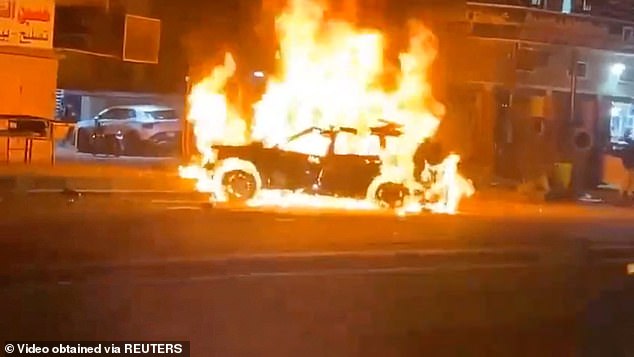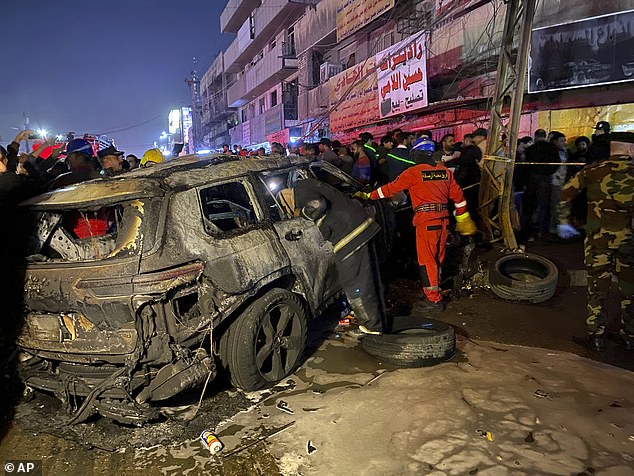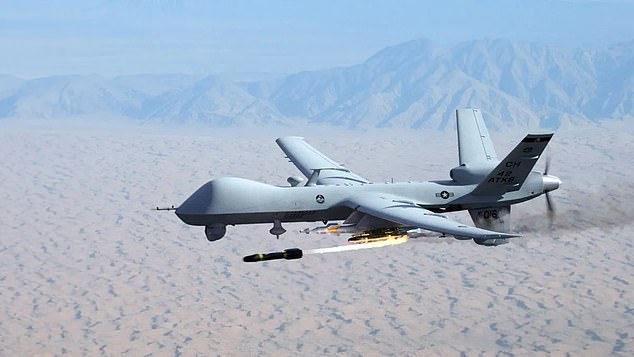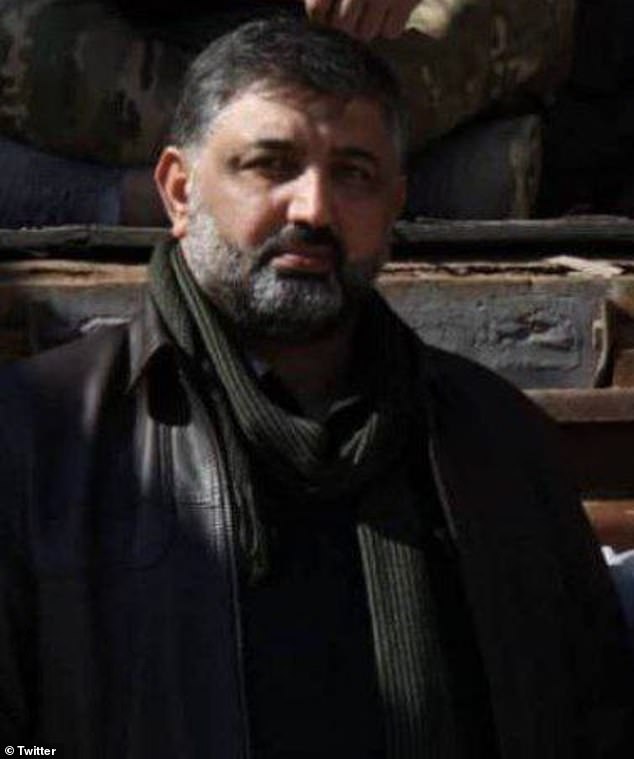- Dramatic images show the remains of Wissam Mohammad al-Saadi’s car in flames
Tensions in the Middle East rose further last night after the US killing of a commander of an Iranian-backed militia in Iraq.
Dramatic images showed the burning remains of the car in which Wissam Mohammed ‘Abu Bakr’ al-Saadi was traveling when it was hit by a US drone.
The commander of Kataib Hezbollah’s operations in Syria was killed along with two other members of the group in the Iraqi capital, Baghdad.
Washington ordered the attack in retaliation for attacks on US troops in the region, but Iraqi authorities have condemned the “brazen murder” in a residential neighborhood.
Crowds were seen surrounding the vehicle after the attack on Wednesday night, as local officials warned that the attacks could end the US-led coalition in the country.
Wissam Mohammed ‘Abu Bakr’ al-Saadi (pictured) was the commander of Kataib Hezbollah’s operations in Syria.

Screenshot shows the burning remains of Wissam Mohammed ‘Abu Bakr’ al-Saadi’s car
Yehia Rasool, spokesman for the Iraqi prime minister, said: “The international coalition is completely going beyond the reasons and objectives for which it is present on our territory.”
And he added: “This trajectory forces the Iraqi government more than ever to end the mission of this coalition, which has become a factor of instability and threatens to entangle Iraq in the cycle of conflict.”
Angry crowds chanted “Death to America,” “America is the biggest devil” and “America, get out of our land” in Baghdad as they clashed with dozens of riot police.
“The US needs to be investigated for violating international law,” one protester told Sky News.
‘How can they attack another country and kill people with impunity?’
The US attack immediately sparked angry demands for retaliation from other pro-Iran fighting groups, which form the so-called Axis of Resistance in Iraq.
The paramilitary group Harakat Hezbollah al Nujaba warned: “This will not be the last (attack) if there is no strict and firm official response from the Iraqi government.”
The United States has about 2,500 troops in Iraq and 900 in neighboring Syria on a mission to prevent a resurgence of the Islamic State.
A U.S.-led invasion of Iraq in 2003 to overthrow Saddam Hussein set off a spiral of violence and disorder that continues today.

In the photo, members of the civil defense gather at the site of the burned vehicle targeted by a US drone attack in eastern Baghdad.

Pictured is an MQ-9 Reaper firing a Hellfire missile. Commander killed in drone strike
It came as Israeli troops bombed the southern Gaza town of Rafah yesterday ahead of a planned ground offensive.
Prime Minister Benjamin Netanyahu vowed to send troops after rejecting a peace deal offered by Hamas on Wednesday.
Israeli officials have said they cannot end the war before dismantling Hamas’ infrastructure for smuggling weapons across the border, with Rafah being a key checkpoint.
Michael Milshtein, former head of Palestinian affairs at Israeli military intelligence, told the Wall Street Journal: “Leaving Rafah as an open door between the world and Gaza means that Hamas will immediately begin rebuilding its military capabilities.”
However, Rafah is filled with more than a million refugees and the crossing is also a key route for aid, meaning any attack risks worsening the humanitarian crisis.
Egypt has warned it will end a decades-long truce with Israel if Palestinians try to flee across the border.
But despite the turmoil, there were positive signs yesterday as peace negotiations resumed in Cairo.
Hamas indicated it still hopes to discuss a ceasefire even though Netanyahu rejected its initial offer as “strange.”

